Tserkva of Archangel Michael, built in 1757, was founded by Piotr Paszkiewicz, owner of Świątkowa. It is said that originally it stood on the other side of the stream but was moved to a new location because the faithful had problems reaching the tserkva when the level of water was high.
The church was reconstructed in the 18th, 19th and 20th century. The tower was presumably added in 1796 and the sacristy in 1833.
The tserkva represents the older type of north-western Lemko style of construction. It is a tripartite log church, oriented eastward. The chancel is adjoined by the sacristy on the northern side. The multi-tier four-pitched roofs are topped with neo-Baroque turrets. The post-and-beam tower, with tapered walls and bell chamber, features a cupola with a turret. The posts of the tower comprise the narthex. In the 1950s, the lower parts of the posts, which were rotten, were removed and replaced with concrete plinths. The tower comprises annex side structures. In 1967 fragments of a portal with the date 1757 were discovered. During works carried out in 2014, the outer walls were repainted to recreate the original colours, predominantly blue and green and the arcade-shaped decorations highlighted in red.
Inside we can see very colourful figural and ornamental wall paintings with Baroque features, from the 1700s, and partly altered in the 1800s. The dome over the nave features a cross-shaped tie beam decorated with carved cord-like ornament. In the narthex there is an amply decorated flat ceiling with a representation of Elijah the Prophet on a chariot of fire.
The 18th century altar in the chancel comprises a contemporary painting. In the nave there is a 17th century icon with a representation of the Judgment Day.
On the northern side of the nave, we can see a multi-panel icon with a representation of the Passion, from the 1640s. A 17th century stone holy water font has also been preserved.
Photos: Michał Bosek, Krzysztof Zajączkowski
Gallery
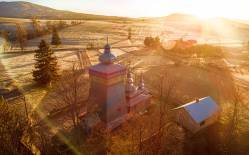
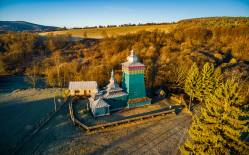
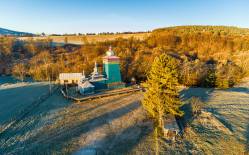
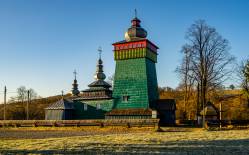
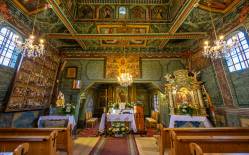
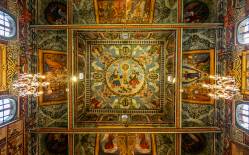
Recommended venues on the Trail
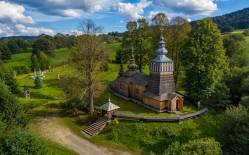
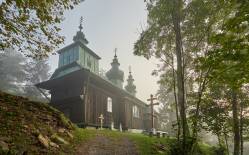
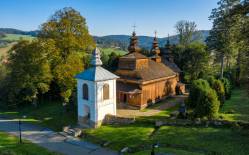
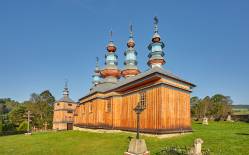



This website has been modernized with the financial support of the European Union under the Cross-Border Cooperation Programme Poland-Belarus-Ukraine 2014-2020. The responsibility for its content lies solely with the Podkarpackie Regional Tourism Board and cannot, in any case, be treated as a reflection of the position of the European Union, the Managing Authority, or the Joint Technical Secretariat of the Cross-Border Cooperation Programme Poland-Belarus-Ukraine 2014-2020.









